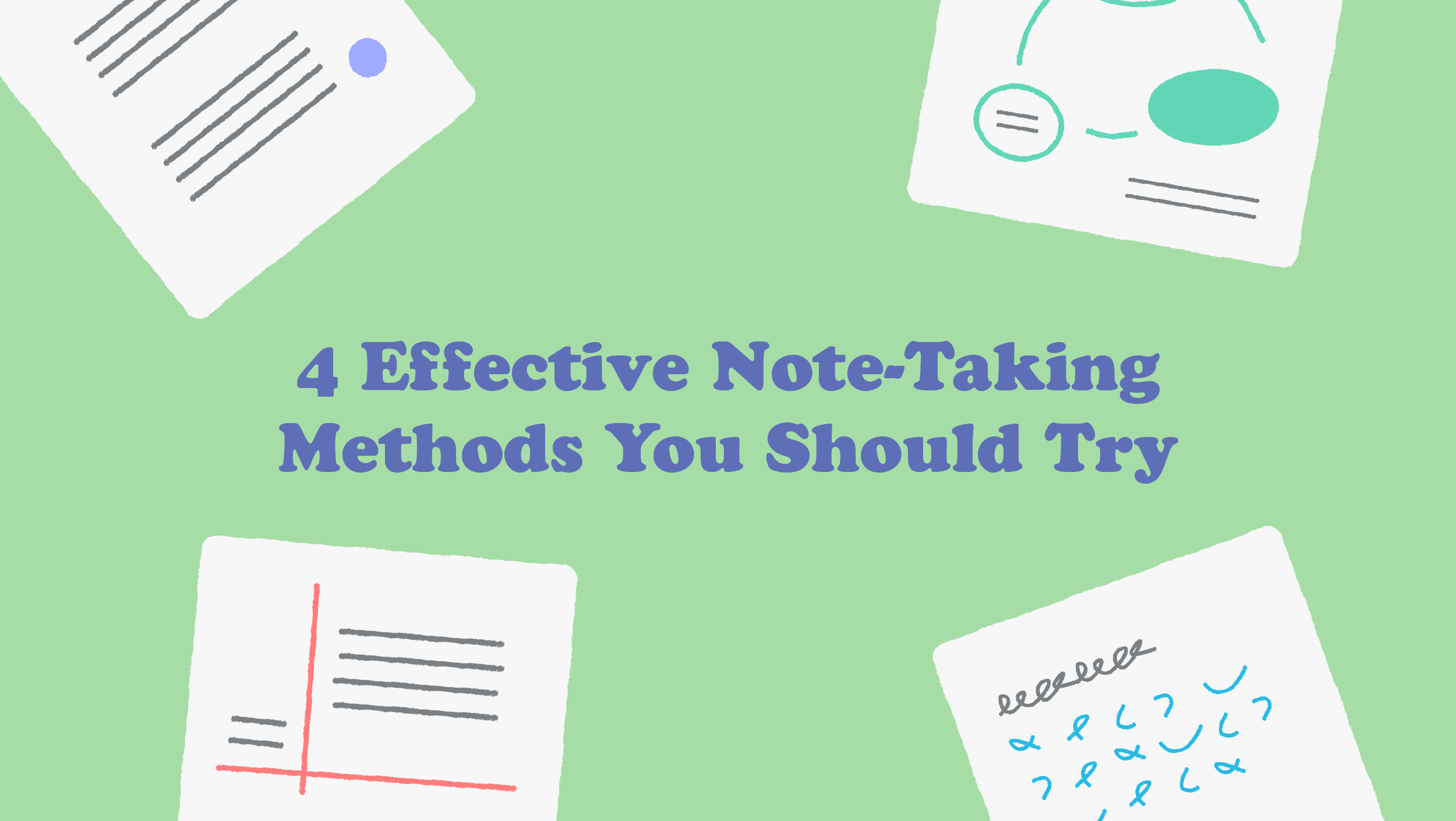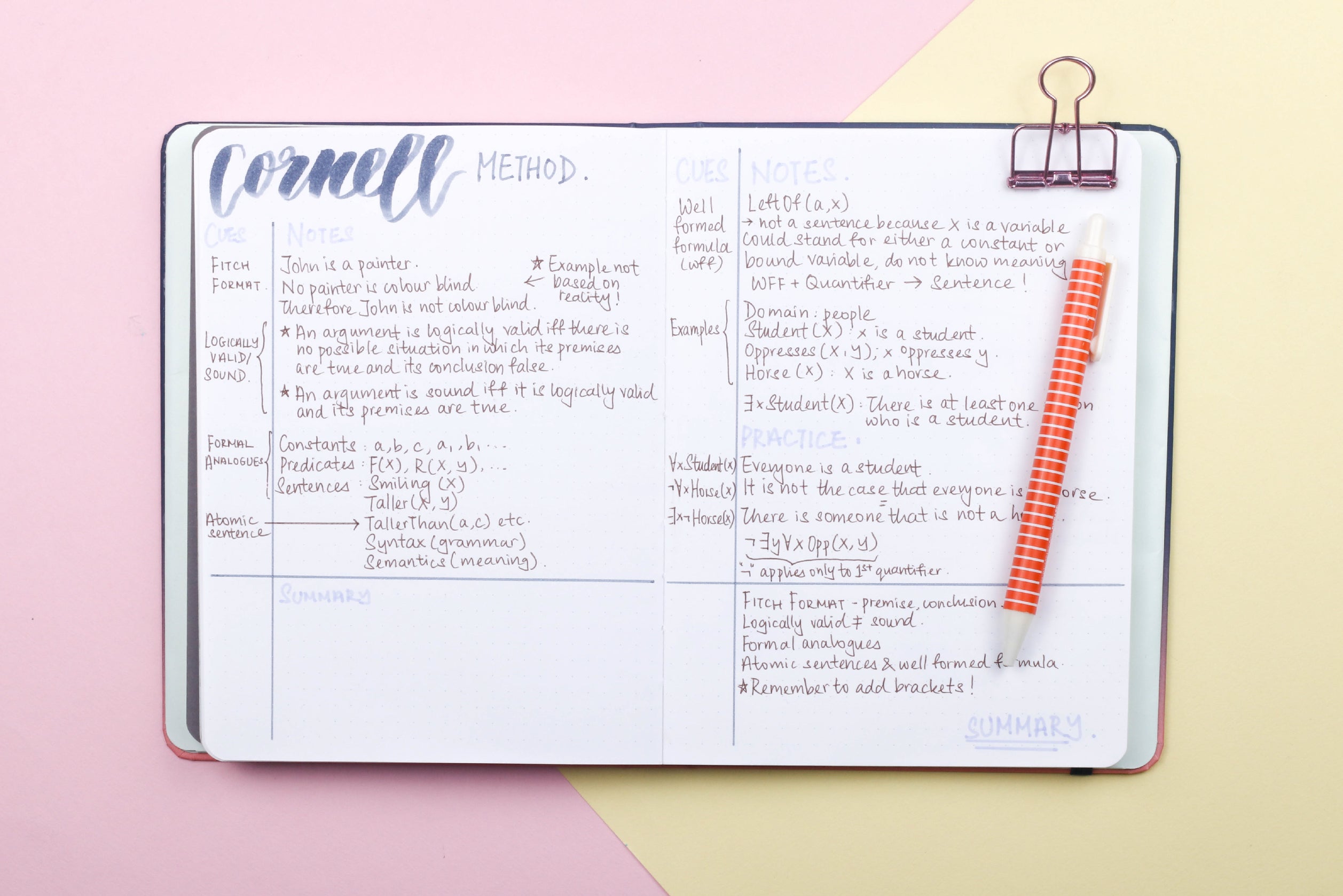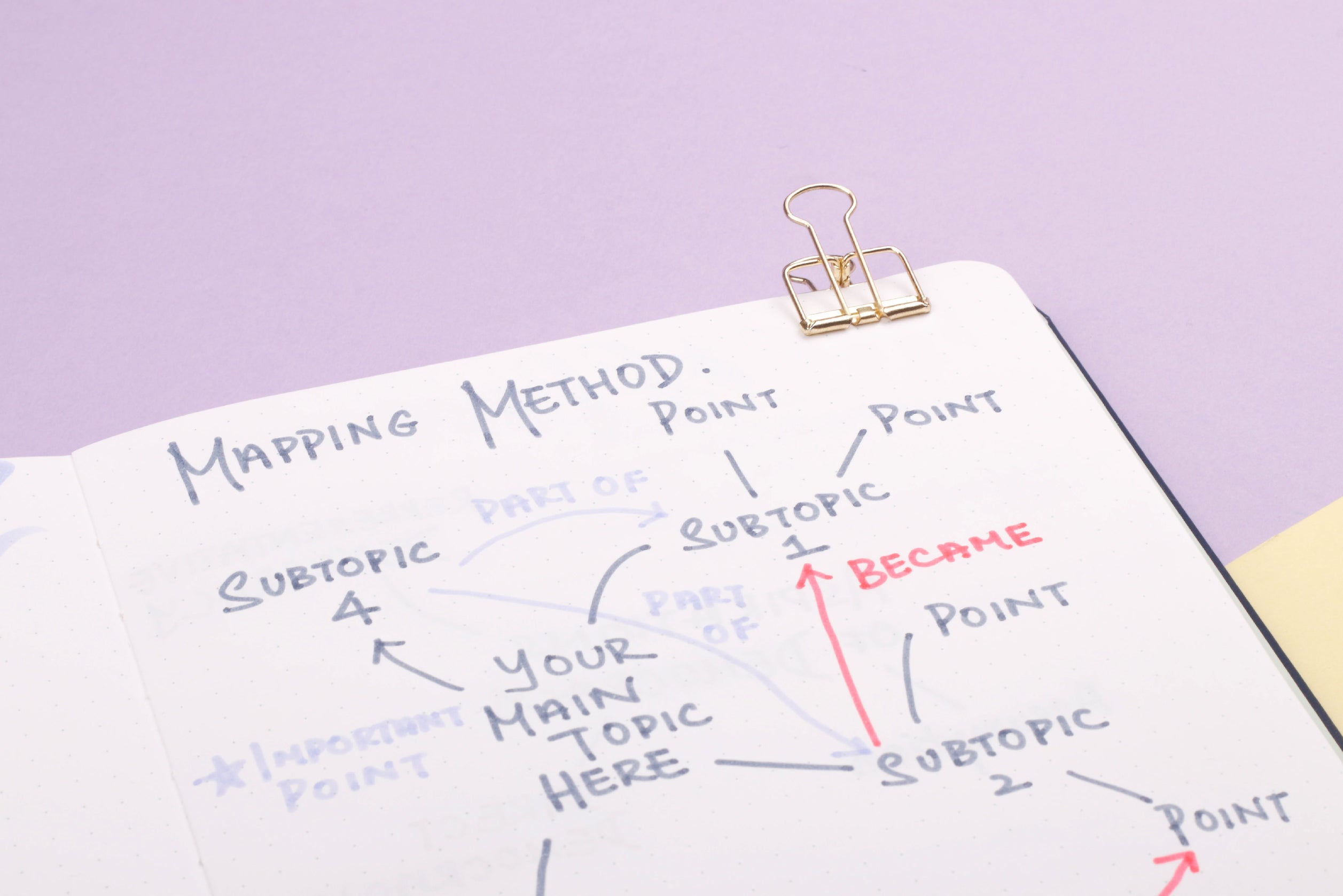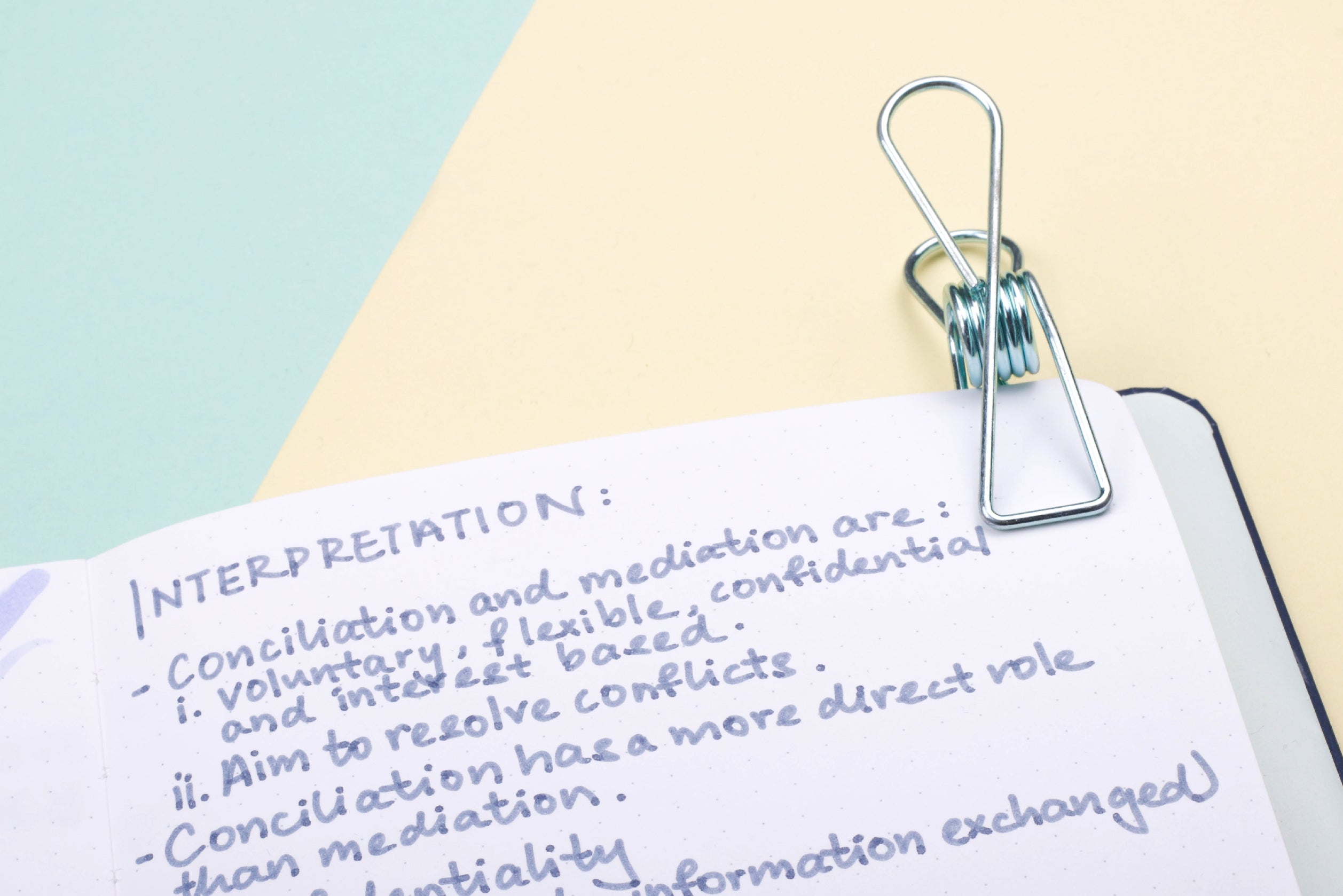
Ever tried to scroll through your feed and found yourself looking in awe of the beautifully structured, colour-coded notes of a random high schooler you found on Instagram?
As aesthetically pleasing as they are, most of us are unlikely to recreate notes similar to that caliber!
So for those of you who are just looking to have neat, structured, and organised notes, we have gathered a few note-taking methods in hopes that they will work for you!
Read on for a quick introduction and overview of these methods!
The Classic

As expected, this method is probably the most well-known and commonly used method.
Being the default Microsoft Word structure, the method comes naturally to most people. All you have to do is have a main topic, and bullet points below to elaborate on said main topic.
This method is not only easy, it’s logical and structured. If your topic requires a clear structure, this note-taking method is the one for you.
However, for longer and more complicated topics, using this method might clutter up your note-taking medium which may eventually lead to disorganization.
The Cornell Method

You have probably seen this method all over the internet and with good reason! How it works is that before you start note-taking, divide your note-taking medium into three sections.
In the section on the right labelled Notes, jot down your notes during the session.

In the section labelled Cues, list down prompts for the notes listed down.
For example, your notes were on a lecture about Factors Causing Climate Change, so your prompts could be talking about main points such as the Industrial Revolution.

The third section is meant for you to review and summarise the lecture as a whole. This way you get to add in or remove any information to make the notes work more effectively for you.
This method enables you to have a rough idea of what the main points of the session was with one glance.
This makes it suitable for lectures or classroom notes as they are always presented in a relatively structured way that makes it perfect for reviewing before an exam.
However, this method is unable to show a flow in ideas, which makes it less suitable for, say, brainstorming sessions.
The Mapping Method

The Mapping Method, on the other hand, combats the flaws of the first two methods. The mechanism behind this method is similar to a mind map (check out all about mind maps here!)
So first, start off with a main topic at the top or in the middle of your notes. Ensure there is sufficient space for you to elaborate on subtopics.
Under your main topic, add your subtopics (and headers!) by branching out across the paper.

The Mapping Method is definitely superior when it comes to expressing ideas and points that are inter-correlated.
By drawing a flow, we are able to clearly see how points affect each other, which makes it suitable for case study, brainstorming sessions, or subjects such as History.
However, if the material is too long or point oriented with not much flow in between, using this method will be ineffective as it will likely become a mess.
Shorthand

Last but not least, the Shorthand method! Imagine yourself in a meeting where the presenters have a tendency to speak incredibly fast, making it extremely difficult for you to take notes (or take complete notes).
In this scenario, it would seem that none of the above methods would be useful, or practical, and this is when shorthand comes in!

Shorthand is a system which helps you increase your speed of writing through using symbols or abbreviations to represent words, phrases, or sentences.
There are three formal Shorthand types, but those can be complicated and it may take a while for one to pick up. So we encourage you to create your very own shorthand!

For example, if you wanted to write the word, “something”, you could shorten it to “stg”. After a while, you would end up creating a whole system that works for you!
The main upside for this is that it is a much faster way to take notes, but the obvious downside is that the notes would be exclusive only to you, which means it’s probably inaccessible to anyone else.
In the end, these 4 note-taking methods have their own strengths and weaknesses which you have to take into account before applying them to your own notes.
However, as with most things, you can always tailor and customise the method to suit your own needs.
One thing is for sure though, that although these notes are not as aesthetically pleasing as the ones we see on our feed, they are definitely just as useful and interesting!
-
What note-taking methods do you use? Share your tips by commenting below or tagging @mosseryco on Instagram!
Check out @lyn.spiration for more lovely artwork!

Leave a comment